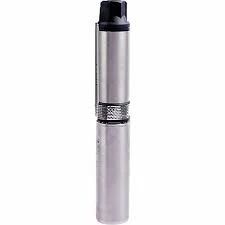Dec . 06, 2024 20:52 Back to list
Innovative Solutions for Efficient Submersible Water Pump Systems in Various Applications
The Importance and Functionality of Submersible Water Pumps
Submersible water pumps are innovative devices designed to operate while fully submerged in water. They play a crucial role in various applications, ranging from residential water supply to industrial processes. Understanding how these pumps work and their various uses can help users select the right model for their needs.
How Submersible Water Pumps Work
At the heart of a submersible water pump's design is a sealed motor that enables it to be submerged under water without damage. This unique construction allows the pump to push water to the surface using the pressure generated by the motor. The impeller, typically situated inside the pump, rotates at high speeds to create a centrifugal force, which moves water through the pump's outlet. Submersible pumps are generally more efficient than their non-submersible counterparts because they do not rely on suction, reducing the risk of cavitation, which is common in above-ground pumps.
Key Components
Submersible water pumps consist of several essential components - Motor The motor is encapsulated to prevent water from entering, ensuring that it functions effectively while submerged. - Impeller This component helps in converting mechanical energy into kinetic energy to move water. - Pump Housing The casing that protects internal components and provides structural integrity. - Seals Water-tight seals prevent water from seeping into the motor, safeguarding its functionality.
Applications
Submersible water pumps find applications in various sectors
1. Residential Use Homeowners utilize these pumps for draining basements, wells, or pools. They are especially useful in flood situations where rapid water removal is necessary to minimize damage. Submersible pumps can also help maintain garden and lawn irrigation systems, ensuring consistent water supply.
submersible water pump

2. Agriculture Farmers rely on submersible pumps to extract groundwater for irrigation. These pumps are capable of reaching significant depths, making them ideal for accessing water from deep aquifers, thus ensuring crop sustainability, especially in arid regions.
3. Construction In construction projects, submersible pumps are often employed to remove water from excavated sites, making it easier to pour foundations and build structures. Their efficiency in water removal can significantly speed up construction timelines.
4. Industrial Applications Many industries utilize submersible pumps in their processes, including wastewater management, chemical production, and mining. They help transport liquids, manage drainage, and facilitate various manufacturing processes.
5. Aquaculture In fish farming, submersible pumps are used to circulate water in tanks and ponds, maintaining proper oxygen levels and temperature for aquatic life.
Advantages of Submersible Water Pumps
The benefits of submersible water pumps are numerous - Space Efficiency Their design allows for installation in tight spaces, unlike some surface pumps. - Energy Efficiency They typically consume less energy, providing cost savings over time. - Low Noise Levels Because they operate underground, they generate lesser noise compared to above-ground pumps. - Durability Built to withstand harsh conditions, submersible pumps often have longer lifespans than many other types of pumps.
Conclusion
In conclusion, submersible water pumps are vital tools in modern water management, offering efficient, reliable solutions across various applications. Understanding their functionality and use can empower homeowners, farmers, and industrial operators to make informed decisions tailored to their specific needs. Whether draining a flooded area, irrigating crops, or managing wastewater, submersible pumps continue to prove indispensable in today's world. As technology advances, we can expect even greater efficiencies and capabilities from these essential water-moving devices.
-
Submersible Water Pump: The Efficient 'Power Pioneer' of the Underwater World
NewsJul.01,2025
-
Submersible Pond Pump: The Hidden Guardian of Water Landscape Ecology
NewsJul.01,2025
-
Stainless Well Pump: A Reliable and Durable Pumping Main Force
NewsJul.01,2025
-
Stainless Steel Submersible Pump: An Efficient and Versatile Tool for Underwater Operations
NewsJul.01,2025
-
Deep Well Submersible Pump: An Efficient 'Sucker' of Groundwater Sources
NewsJul.01,2025
-
Deep Water Well Pump: An Efficient 'Sucker' of Groundwater Sources
NewsJul.01,2025
-
 Submersible Water Pump: The Efficient 'Power Pioneer' of the Underwater WorldIn the field of hydraulic equipment, the Submersible Water Pump has become the core equipment for underwater operations and water resource transportation due to its unique design and excellent performance.Detail
Submersible Water Pump: The Efficient 'Power Pioneer' of the Underwater WorldIn the field of hydraulic equipment, the Submersible Water Pump has become the core equipment for underwater operations and water resource transportation due to its unique design and excellent performance.Detail -
 Submersible Pond Pump: The Hidden Guardian of Water Landscape EcologyIn courtyard landscapes, ecological ponds, and even small-scale water conservancy projects, there is a silent yet indispensable equipment - the Submersible Pond Pump.Detail
Submersible Pond Pump: The Hidden Guardian of Water Landscape EcologyIn courtyard landscapes, ecological ponds, and even small-scale water conservancy projects, there is a silent yet indispensable equipment - the Submersible Pond Pump.Detail -
 Stainless Well Pump: A Reliable and Durable Pumping Main ForceIn the field of water resource transportation, Stainless Well Pump has become the core equipment for various pumping scenarios with its excellent performance and reliable quality.Detail
Stainless Well Pump: A Reliable and Durable Pumping Main ForceIn the field of water resource transportation, Stainless Well Pump has become the core equipment for various pumping scenarios with its excellent performance and reliable quality.Detail
